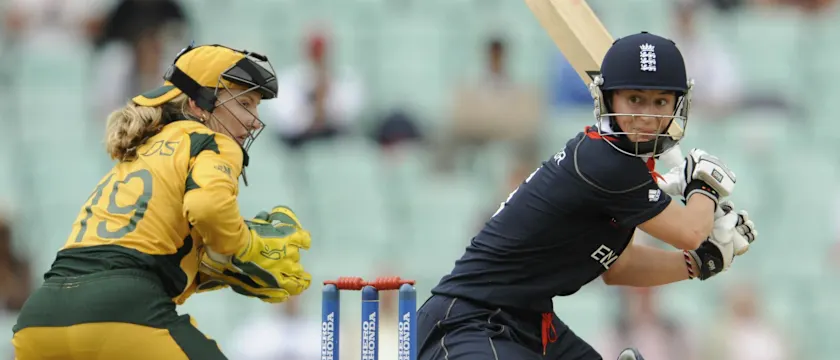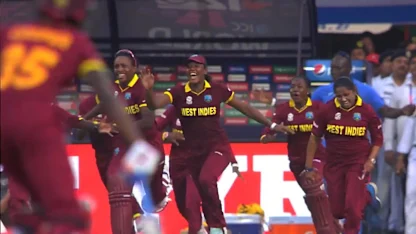ICC Women's World T20 2018 highlights changing face of women's cricket

- The T20 format has been recognised by the ICC as the vehicle of promotion and development of the game and the upcoming ICC Women’s World T20 from 9-24 November is another landmark for women’s cricket
At The Oval on a chilly afternoon in 2009, women’s cricket showed just how much potential it had to steal the show. Before what would be a one-sided encounter between the Windies and Sri Lanka men’s teams, Australia and England women met for their ICC Women’s World T20 semifinal.
The two teams produced what is still one of the classics in the women’s game, with England chasing down Australia’s tall score of 163 in the last over, much to the delight of the home crowd.
Have you heard the official #WT20 2018 song yet?#WatchThis! 🎶 pic.twitter.com/NMiHLygbKp
— T20 World Cup (@T20WorldCup) October 19, 2018
That tournament marked a curve in the development of women’s cricket, with the ICC Women’s World T20 2009 being the first time men’s and women’s tournaments were held concurrently. Double-headers were introduced for the semifinals and finals, which put the women’s and men’s games on the same stage.
Having both matches on the same ground and on the same ticket also ensured that the women’s games were broadcast. This was a prudent move as the double-headers became the best vehicle to popularise the game.
While that innovation helped the T20 game grow, the ODI format flourished with the introduction of the ICC Women’s Championship in 2013. With a fixed qualification process for the ICC Women’s World Cup, the top eight teams were assured a minimum number of games in each World Cup cycle.
This contributed to an improvement in standards and saw more teams becoming competitive. The Windies won the ICC Women’s World T20 2016, becoming the first team besides Australia and England to win a world title since 2000. And the next year, England prevailed in one of the most fiercely contested Women’s World Cups, in 2017.

Meanwhile, things were changing both on and off the field in T20I cricket. As more of the top countries offered their players better compensation, the standard of the game rose significantly. For instance, the top teams flaunted more and more batters with the skill and power to regularly clear the ropes. The ICC Women’s World T20 2014, held in Bangladesh, saw healthy crowds turn up for the standalone women’s group games.
That tournament was an indication that the value of women’s cricket as an independent product had started to grow. Recognising this, the next edition, in 2016, saw even standalone group games televised for the first time, not just the semifinals and finals, which continued as double-headers.
Domestically too, women’s cricket grew from strength to strength, with the game moving towards professionalism. The Women’s Big Bash League launched by Cricket Australia in 2015-16 has proven to be a path-breaking tournament, instrumental in the increased popularity of the sport in that country.
The most recent edition of the WBBL saw a 25 per cent increase in attendance, as well as strong TV ratings. England’s Super League too has established a loyal fan following, attracting the best overseas talent. And India recently held a women’s exhibition game in the midst of the IPL 2018, a move that many hope will set the stage for a formal women’s IPL in the near future.

From only the semifinals and finals of the ICC Women’s World WT20 being televised, the Women’s World Cup 2017 saw every game available on a screen, either televised or live streamed, setting a new benchmark. The success of the tournament underlined how women’s cricket was now a bonafide draw by itself, validating the ICC’s 2016 decision to hold all future Women’s World T20 tournaments as standalone events.
A 2017 ICC market research project revealed that 39 per cent of the billion cricket fans worldwide are female, and two-thirds of all fans have expressed an interest in women’s cricket. In line with that, the ICC Women’s World T20 2018 will break new ground in more ways than one: It will also be the first ICC women’s tournament to see every single game televised.
One of the ICC’s objectives is to have females form half of all new participants in cricket by 2023, and standalone global events are an important stepping-stone to that. The ICC Women’s World T20 is now a critical cog in that strategy as the ICC continues to drive the growth of the game through the shortest format.
All women’s T20 matches between Members have international status since the Asia Cup in June and a new rankings system introduced earlier this month that separates ODI and T20I team rankings, is another step towards the globalisation of the game.
The following is the schedule of upcoming articles:
22 Oct – First-person article by Australia women’s captain Meg Lanning
23 Oct – First-person article by England captain Heather Knight
24 Oct – First-person article by New Zealand captain Amy Satterthwaite
25 Oct – Umpire and match referee appointments
25 Oct – First-person article by India captain Harmanpreet Kaur
26 Oct – First –person article by South Africa captain Dane van Niekerk
The following articles have been released and are available on the ICC website and OMZ:
20 Oct – Calypso support and history add to flavour of ICC Women’s World T20 2018
19 Oct - A look back at previous tournaments
10 Oct - Squads confirmed for ICC Women’s World T20 2018

